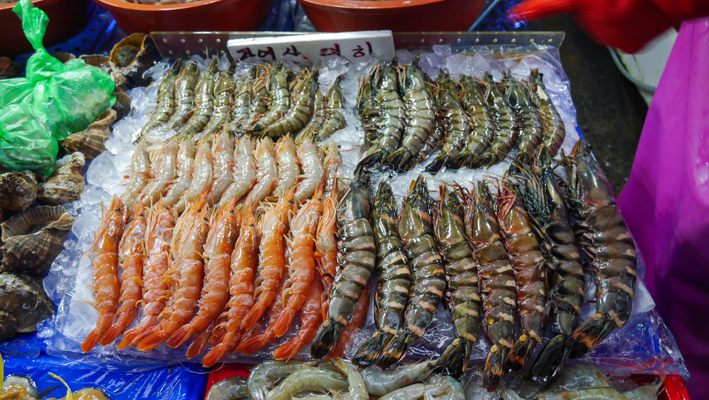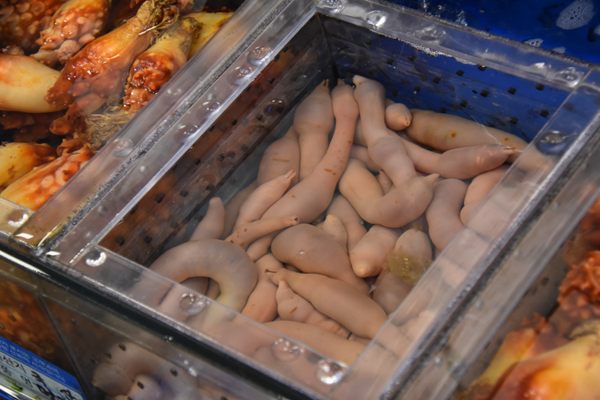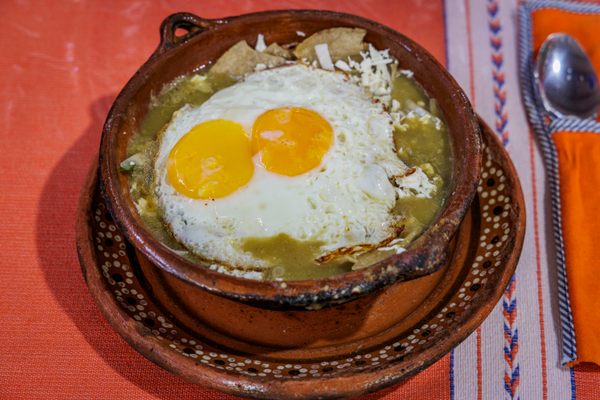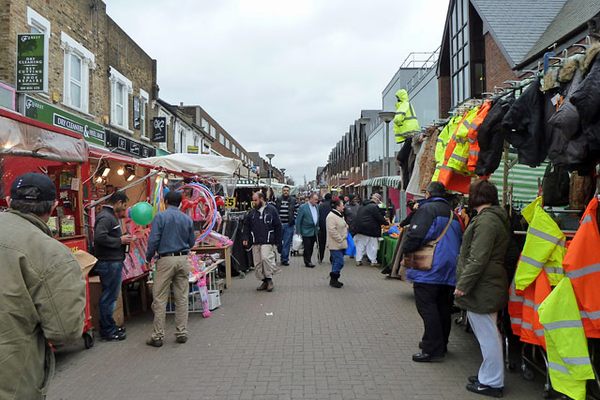About
Tentacles trail off tables. Vendors shovel shellfish into buyers' bags. Gleaming fish swim in aquariums. At the Noryangjin seafood market in Seoul, the fish is as fresh as it gets. The lower floors of this massive market, which supplies around 50 percent of Seoul's seafood, is dominated by every imaginable fruit of the sea, from giant crabs to salmon steaks to the suggestively shaped penis fish. On the upper floors, rows of restaurants cook shoppers' purchases to their specifications or prepare a classic dish of hwe or hoe, raw uncured seafood cut fresh and enjoyed with sauces and salads.
Open 24-7, the market particularly comes alive late at night when, from around 1:00 a.m. until dawn, the space buzzes with seafood auctions. On weekend evenings, meanwhile, the building bustles with locals doing their shopping and socializing over bitter soju and fresh, salty hoe. No matter what the time, wandering through Noryangjin can take hours.
There are two buildings at the site: an older, open-air structure, which housed the original market, and a shiny, recently-updated building, complete with escalators, a whopping eight floors of stalls, and hundreds of vendors calling out to visitors to sample their wares. The move was controversial; some vendors refused to shift from the old building to the mall-like new structure, and you can see protest graffiti on the older warehouse. Most vendors, however, have made the move. The new building now includes some favorite spots, such as a knife shop in Section D, offering sharp tools for aspiring sashimi chefs, and a fermented seafood market, featuring salty, pungent cured fish.
Noryangjin offers another, slightly more controversial delicacy: sannakji. This octopus is even fresher than other kinds of hoe, as it's not only raw—it's moving. To prepare the dish, chefs chop the tentacles of a live octopus, and while the resulting morsels are technically dead, nerve reactions in the tentacles keeps them squirming even as they're eaten. There's been some debate on the ethics of this dish, but it is undoubtedly a popular local specialty, and if you're going to try it, Noryangjin is the best place to do so. Experienced sannakji eaters offer one tip: The tentacles' suckers have been known to stick on the way down, so chew thoroughly.
Related Tags
Know Before You Go
Visitors can easily access the market from Noryangjin Station, but be aware: There are actually two different, unconnected Noryangjin stations from two different metro lines, so be sure to specify which one if you're meeting friends. Inside, the dizzying array of vendors and restaurant options may overwhelm you, but chances are the stall you buy seafood from will have its own connection to a restaurant. Follow where the vendor leads you and fishy goodness is yours.
Published
April 2, 2019

















































